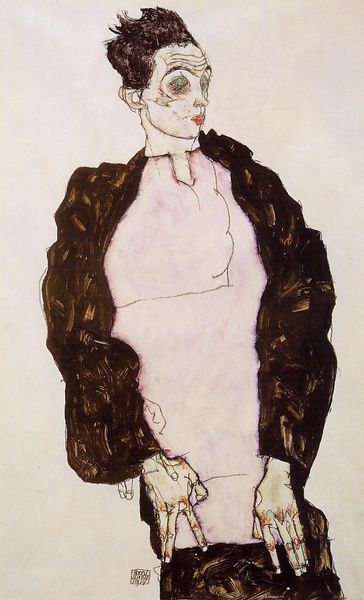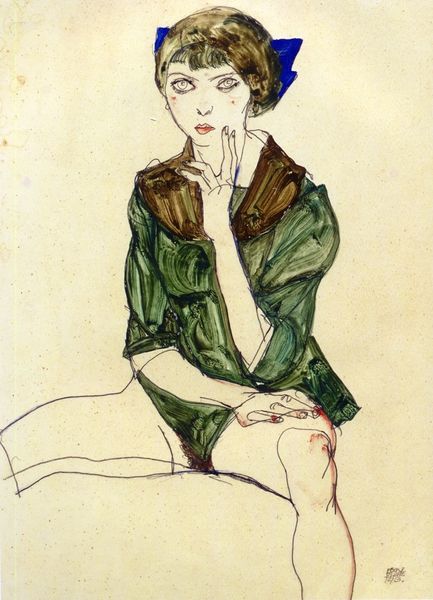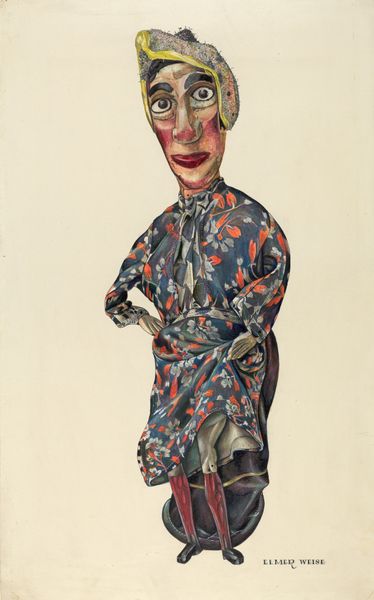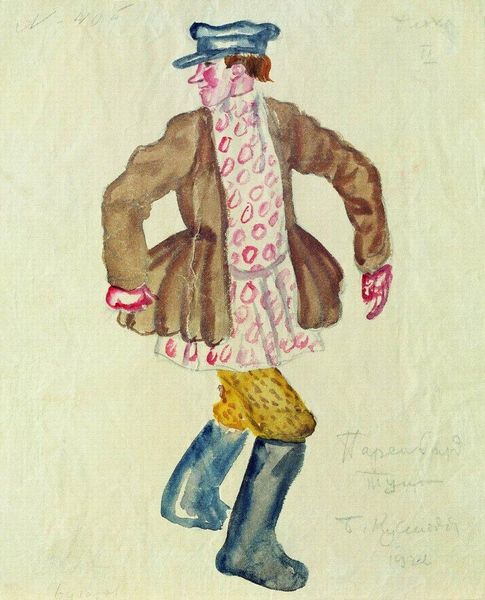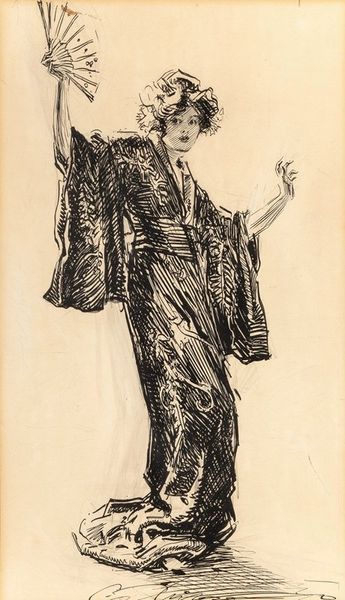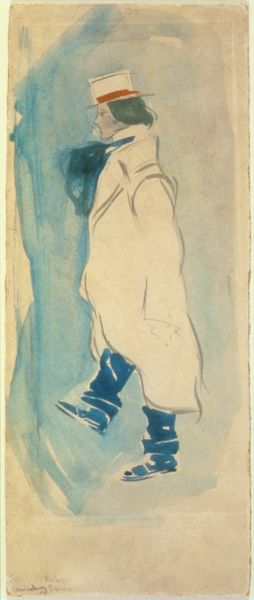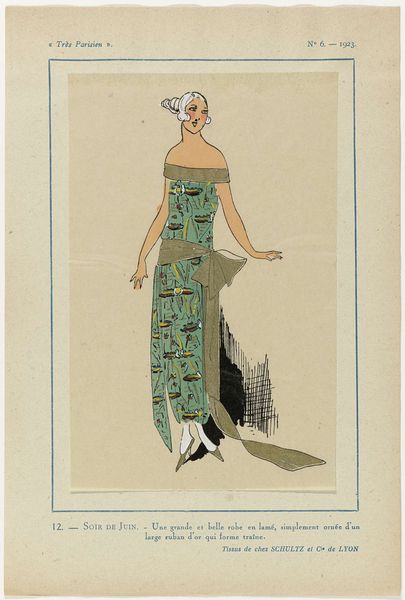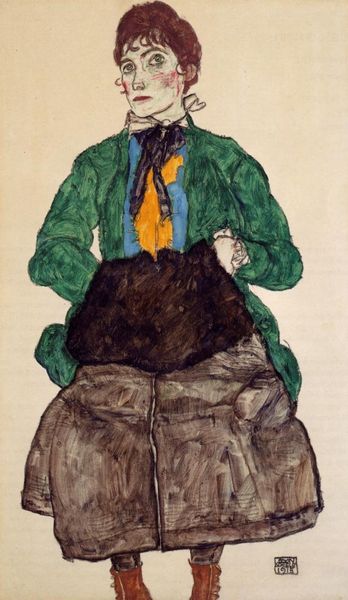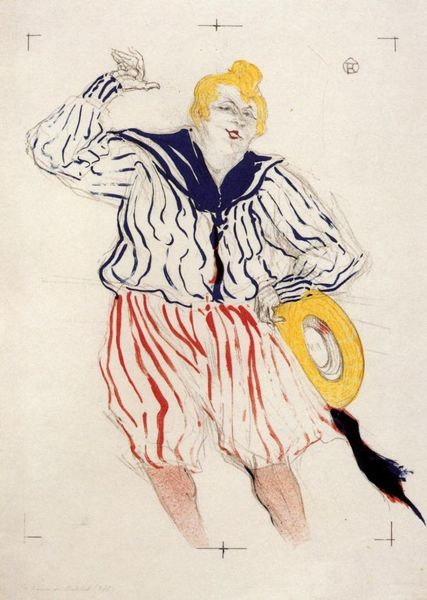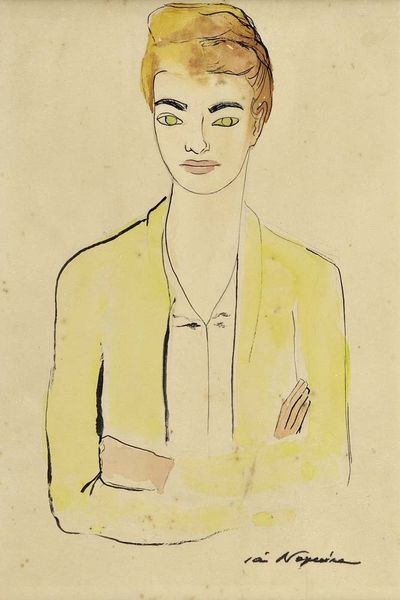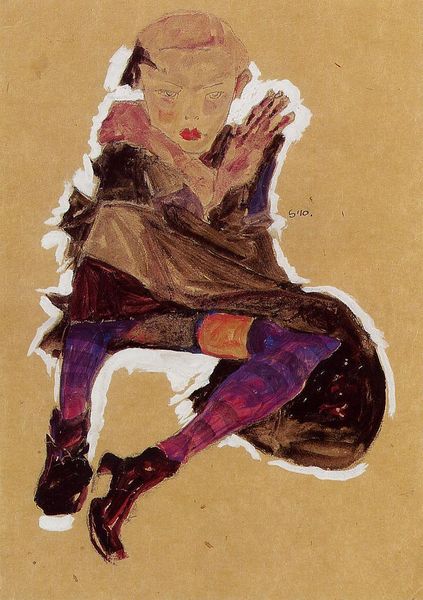
drawing, coloured-pencil, watercolor
#
portrait
#
drawing
#
coloured-pencil
#
figuration
#
watercolor
#
coloured pencil
#
expressionism
Copyright: Public domain
Curator: Immediately, that posture… the almost confrontational gaze… it speaks volumes even before knowing it’s a Schiele. Editor: Indeed. Let's delve into this compelling piece. What we’re looking at is Egon Schiele's "Crouching Figure (Valerie Neuzil)" from 1913. It’s a drawing primarily executed in watercolor and colored pencil. There is a raw openness in Valerie's stance here, as though she's saying, "Here I am, look." The direct address is impossible to ignore. Curator: Absolutely, there's that familiar Schiele boldness. She’s squatting, almost coiled, with these intensely coloured limbs creating this beautiful, painful, anxious geometry. But it also radiates an almost unsettling allure. There’s this very visceral push and pull. Do you feel it too? Editor: I do. It's impossible to view this figure outside of its context; Schiele's work always existed within, and against, Viennese society’s complex views on gender and sexuality. Notice the distortion, the flattened perspective. This positioning places Valerie’s self-presentation outside the established norms for how women should look. It seems like a statement, what do you think? Curator: Definitely! It's like he's deliberately avoiding any classical notions of beauty or refinement. Those sharp angles! The muted colour palette juxtaposed with the harsh reds on her lips and cheeks… He’s actively shaping the experience, pushing boundaries and perhaps making her look less inviting and demure to represent her complex state. Schiele's Valerie, it’s pure emotion rendered on paper. She is the picture of conflict, of introspection. It's almost painful, yet undeniably arresting. Editor: The deliberate artlessness might be key. Through figuration, he isn’t aiming for likeness but truth; but whose truth? This portrait is a window onto the artist’s psyche as much as the sitter’s. And of course, we also understand his life choices when it comes to Valerie Neuzil... Her life became a vortex revolving around Egon, both a catalyst for, and casualty of, his art. Curator: Perhaps that's where some of that discomfort I mentioned comes from, we feel the charge because we’re implicated. It leaves us pondering the artist’s role in all this, no? As creator, exploiter, admirer, partner... It’s such a knot, impossible to tease apart completely. I suspect that is its magic. Editor: Precisely. The power of "Crouching Figure (Valerie Neuzil)" lies in its unflinching exploration of human experience, complicated desire, and the relationship between artist, model, and society. Curator: Well, for me, I will probably keep pondering all those feelings she brings up forever. Editor: And, of course, as with much great art, this complexity of affect keeps it alive in the world, drawing us back to see more.
Comments
No comments
Be the first to comment and join the conversation on the ultimate creative platform.
